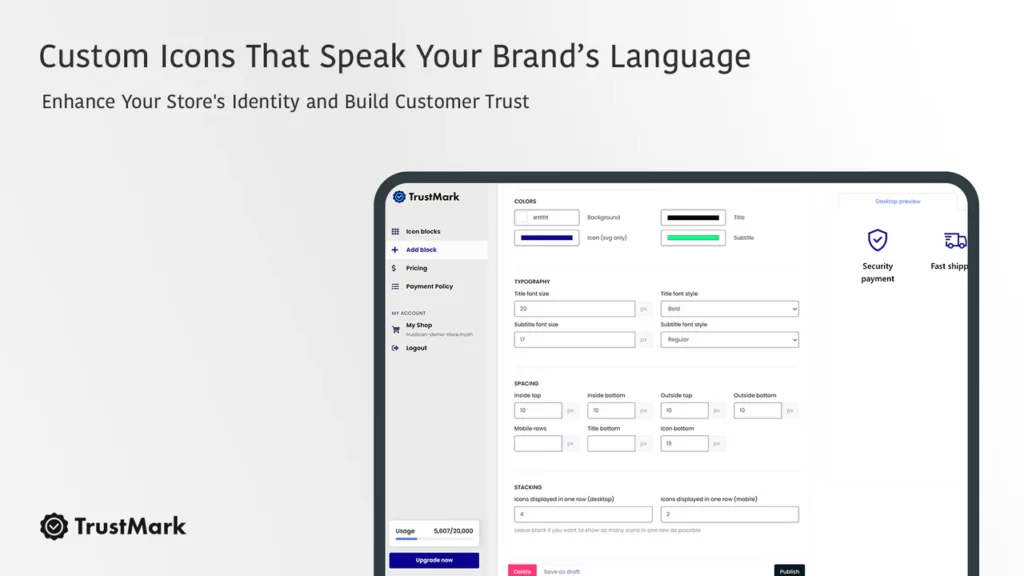Content localization is more important than ever. As businesses expand globally, they need to speak their customers’ languages and understand their cultures. Localization goes beyond simple translation. It adapts content to fit local tastes, preferences, and norms.
These trends are influencing how companies are making their stories more relevant and engaging. From hyper-personalization to voice search optimization, each trend provides helpful insights.
If you’re able to understand and apply these trends, you’ll connect with more audiences. Regardless of whether your company is a small business startup or a major corporation, keeping up with trends such as these can give you a competitive edge.
Table of Contents
What is Localization?
Localization is the process of adapting content for a specific locale or market. It goes beyond simply translating content. Localization takes into consideration cultural and linguistic factors and other regional elements, which result in telling a story that resonates with local audiences.
Translation
Translation is arguably the first stage of localization. It is the process of converting text from one language to another. But not every language shares the same meanings. Therefore, translation doesn’t necessarily mean localization. Localization involves ensuring that the content has a sensibility the audience relates to and understands in their language.
Cultural Adaptation
Cultural adaptation involves adapting content to accommodate local customs and preferences, which includes multiple factors such as images, colors, symbolism, and humor. What is positive for a culture can be viewed as negative or neutral for another. The goal of cultural adaptation is to be culturally relevant as well as respectful.

Local Regulations
Dealing with local regulations is also a key part of localizing content. This can include local advertising regulations, privacy legislation, and any particulars that might also cover any number of other local laws. It is extremely helpful to comply with regulations so they do not become a legal issue and can help embed trust with local audiences.
Technical Adjustments
Finally, it is important to understand technical adjustments are also key aspects of localization. Technical adjustments involve changing formats, units of measure, etc. in order to conform to location ($ vs £), for example. Date formats and currency symbols also differ, even though both operations may be similar, date formats and currency symbols may differ from country to country. Adjusting all of that helps ensure user-friendliness and reduces errors and user problems.
Difference from Translation
While translation focuses on converting text from one language to another, localization covers much more. It includes cultural and contextual adaptation. Localization ensures the content feels native to the target audience. It makes content relevant, relatable, and effective in different regions.
Importance of Localization
Localization is crucial for global business success. It helps brands connect with diverse audiences. By speaking their language and understanding their culture, brands build stronger relationships with customers.
Enhanced Customer Experience
Customers have a better overall experience thanks to localized content. Everyone prefers content in their own language. Moreover, when brands embrace consumers’ culture, they show how much consumers are valued and understood. Customers intend to engage even further with the brand.
Market Expansion
Localization helps businesses enter entirely new markets by giving content access to many more people. Localized content also means brands can extend their reach and get in front of a new audience. It is far easier for businesses that localize content to engage and establish curiosity to eventually retain customers in a new region.
Competitive Edge
Brands that do localize content gain a competitive advantage. Localized brands stand out when people come across competitors that don’t localize content. Localized brands can provide the best specifications for local consumer engagement to meet the needs of a local customer, and there is a huge advantage to meeting local engagement needs.

Revenue Growth
Localization can drive revenue growth. By appealing to local preferences, brands can increase sales. Customers are more likely to buy from brands that speak their language and respect their culture. This can lead to higher conversion rates and more revenue.
The Top 5 Trends in Content Localization
These content localization trends will allow you to reach the right audience more easily.
Hyper-Personalization
Hyper-personalization adjusts content according to the desires and predispositions of users, utilizing state-of-the-art technologies including AI and machine learning to analyze customer information and produce hyper-tailored content.
Customers expect every experience to be personalized for them; they want content to be tailor-fit to their preferences, wants, and needs. Hyper-personalization delivers that type of experience. Giving customers hyper-personalized experiences makes them feel valued, understood, and appreciated.
Here are some of the strategies you can utilize to execute hyper-personalization.
Utilize AI and Machine Learning
These technologies will process a high volume of data. Data that can offer insights into the preferences and behaviors of users. This allows you to create content that has a high degree of relevancy for the user.
Segment Your Audience
Divide your audience into smaller groups, for example, users who interact with your organization, based upon behavior vs. organization, patterns, and preferences, so you can create a more targeted and personalized experience.
Dynamic Content
Dynamic content changes based upon the user data. For example, if a user browses various categories of products, product recommendations can take place in very different contexts. For one user a birdhouse could be suggested with high-price-point products, while for another user a birdhouse could be suggested alongside low-price-point products.
Tailored Emails
Send personalized emails that focus on your customer’s individual interests. Use customer names, recommend products based on images of customer preferences, and offer discounts based on their purchasing history.
Behavior Tracking
Track customer behavior on your website or app. Use this data based on the customer’s behaviors to provide a personalized experience for your customer. This could be filtering and showing content or offers based on what they did in the past!
Voice Search Optimization
Voice search is becoming more popular. Many people use voice-activated devices like smartphones and smart speakers. This trend is changing how people search for information online.
Voice search is fast and convenient. Consumers can use their voice to ask questions instead of needing to type them. This makes searching convenient on the go. For businesses, optimizing for voice search can enhance visibility and reach.
Here are some ways you can optimize your content for voice search.
Adapting to Local Languages
Another area to focus on is adapting your content to local languages. Voice search users use conversational language. So businesses should consider looking for keywords that best match the way people talk in their area. Additionally, including some local phrases or slang in the content will make it more relevant.
Long-Tail Keywords
Another way is to focus on long-tail keywords. Typically, voice searches are longer than typed searches and are more specific. For example, where a user types “best pizza,” they are more likely to say, “Where can I find the best pizza near me?” Businesses need to use these long and specific phrases in their content.
FAQ Pages
Another really useful type of content is frequently asked questions (FAQ) pages. Many voice search users will have to ask questions…you can anticipate the voice search queries, and developing an FAQ page with common user questions and comprehensive answers can get your content served back as a block with a concise answer for each query.
Optimizing for Mobile
Optimizing for mobile is also incredibly important. The majority of voice search occurs on mobile devices, so it is vital to make sure your website is mobile-friendly. You want visitors to quickly engage with your content, efficiently navigate your website, and expect fast loading times on every device!
Localized Video Content
Localized video content creates strong demand. And video content conveys information in a more compelling and shareable way than text. Video viewers want content that is in their own language. Therefore, localization is important when creating video content.
Key areas for localization are dubbing and subtitling. Dubbing means replacing the original audio with a more natural translated version in the local language. This makes it more natural for the local audience to engage with the video in their own language, and it feels more engaging.
Subtitling means translating the original version at the bottom of the screen in text only. The original audio remains, and viewers engage with the content in text form while taking in the content in audio form. There are some cases where subtitling is the preferred option, as it doesn’t change the sound, and the sound may be a critical feature or enhancement to the content.
Localized video content can ultimately enhance your content development efforts.
Utilize Local Talent And Voiceover Artists
Utilizing local talent and voiceover artists adds authenticity. Local voices or cultural accents resonate with the audience. This makes the content seem so familiar that it feels trustworthy. Acknowledging local voice attributes also respects the local culture.
Adapt the Visual Element
Adapt visual elements where appropriate. This includes things like changing images, colors, and symbols. Colors have meanings in different cultures. By adapting these visual elements, the video will become more attractive and relevant.
Utilize Local Video Platforms
Utilize local video platforms to get more information; some platforms have an audience as large as Youku in China or VK in Russia and can gain legitimate viewership. By uploading your video content to those channels, you will increase your visibility and audience engagement and build a local video presence.
Real-time Localization
Real-time localization is the instantaneous ability to modify content for specific markets or languages. This movement incorporates technology to provide a seamless solution to deliver value to your users as seamlessly as possible. By being able to deliver multiple languages of content immediately, companies can engage more users without the headache or barriers of time zones or distance.
Examples of some of the best ways to begin using real-time localization:
Automated Translation Tools
Utilize AI-powered tools that quickly and accurately translate any content into the language of your users. These tools can be integrated with all platforms, including websites/callbacks or customer support, for seamless real-time translations.
Content Management Systems (CMS)
Use a CMS that is able to offer real-time localization features to adapt your content in real time. With this, you can make an update to any or all of the languages supported in your multi-language content framework, and it is updated according to your requirements in all languages with a single workflow.
Multilingual SEO
Creating multilingual SEO means optimizing your website for attracting traffic from multiple languages and regions. This will help your website rank highly in various countries and languages. The visibility of your content will improve, and your site will gain more visitors. Your website will reach consumers who would rather type their search content in their native language.
Keyword Research
Do keyword research in order to find keywords for each language and region. Use Google Keyword Planner, SEMrush, or other tools to find relevant keywords to search for local users.
Hreflang Tags
Implement hreflang tags on your website. Hreflang tags inform search engines what language and region of each page you want users to see. Hreflang tags make sure that search engines show the appropriate version of your content (English, French, German, Spanish, or other languages) based on where the user is searching.

Local Backlinks
Build backlinks from local websites and domains. This improves your website’s authority in specific regions and enhances its credibility with local search engines.
Mobile Optimization
Ensure your website is mobile-friendly and optimized for different devices and screen sizes. Mobile optimization is crucial for SEO performance in many regions.
Adopting these content localization trends can significantly enhance your global marketing strategy. By staying updated with these trends and implementing them effectively, businesses can improve customer engagement. Embracing localization not only meets the expectations of international consumers but also strengthens brand identity and competitiveness on a global scale.
For more similar blogs, visit EvolveDash today!
FAQs
- How is content localization different from translation?
Localization involves adapting content to fit a specific culture, including language, imagery, and local customs. Translation only converts text from one language to another.
- What industries benefit the most from content localization?
E-commerce, entertainment, gaming, software, and global brands see the most impact from localized content. It helps them connect with diverse audiences.
- What is the role of AI in content localization?
AI helps automate translation, personalize content, and optimize it for local search trends. It speeds up the process and improves accuracy.



















